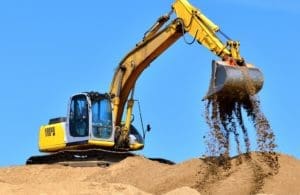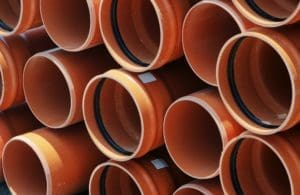6 types of rubber we use

What are the 6 types of rubber we use in the rubber moulding process and why?
1. Silicone Rubber Mouldings
Silicone Rubber Moulding is used in many automotive, electronics and aerospace applications where resistance to temperature extremes is necessary. Examples of products include: low-smoke, low-toxicity products for the rail industry; FDA-approved bakeware mouldings and glow-in-the-dark perimeter blocks.
The benefits
- Faster cycling
- High temperature-tolerance
- Low toxicity
- Full colour spectrum
- Very clean precise moulding
- Broad market usage
 2. Neoprene Rubber Mouldings
2. Neoprene Rubber Mouldings
Neoprene is a great all-rounder and can be used for a broad range of applications but it also has some very specific properties, which make it the go-to raw material for a series of specialist industries such as fire prevention, marine, rail & underground.
The benefits
- Self-extinguishing
- Resistant to oil
- Weather-resistant
- Non-conductive
- Full colour range
- Broad market usage
 3. Nitrile Rubber Mouldings
3. Nitrile Rubber Mouldings
Nitrile Rubber (NBR – acrylonitrile butadiene copolymer) has good mechanical properties when compared with other elastomers, together with high wear resistance. The compound also exhibits excellent compression set properties and has very good tear and abrasion resistance. Nitrile is often used where a seal is required for contact with oil at low temperature.
As a result it is the number one choice for O-ring seals used in engines across all types of industries from construction to rail and public transport.
The benefits
- Resistant to oil
- FDA approved
- Low cost
- Broad market usage
- Fast cycling
- Rubber-to-metal bonding
 4. Natural Rubber Mouldings
4. Natural Rubber Mouldings
Natural Rubber has incredible elasticity and will always return to its original shape, making it an excellent shock absorption and anti-vibration choice. It is commonly used in the food processing and manufacturing industries to produce shock absorbers for production lines where an anti-vibration requirement is paramount.
Another great benefit to Natural Rubber is its wear-resistance. This makes it ideal for seals (although not where water is present). It is commonly used in the rail and defence industries and is nuclear approved.
The benefits
- Water-resistant
- FDA approved
- Good elasticity
- Anti-vibration
- Nuclear approved
- Wear-resistant
 5. EPDM Rubber Mouldings
5. EPDM Rubber Mouldings
If you are looking for a rubber compound that is water-resistant; can handle extreme temperatures (both hot and cold); is resistant to ozone and incredibly long-lasting, then EPDM is the choice for you.
EPDM is great outdoors, so it is a natural choice for use in road signs and speed humps because of its durability and toughness. Its water resistance is second-to-none, making it the compound of choice for seals in drainage pipes, as it complies to BSEN681-1.
The benefits
- Water-resistant
- Extreme weather-resistant
- Ozone-resistant
- Oxidation-resistant
- Long-lasting
- Broad market usage

6. Viton Rubber Moulding
Viton is an extremely hard-wearing compound. It is chemical- and acid-resistant and can withstand oil temperatures of 300 degrees C, making it perfect for use in the petrochemical industry for seals and clamps.
Viton is commonly used for O-rings in engine seals where resistance to fuel and oil at high temperatures is paramount, particularly where high concentrations of bio-diesel are required.
The benefits
- Chemical- and acid-resistant
- Extreme temperature tolerance
- Ozone-resistant
- FDA approved
- Premium quality product
- Broad market usage
 Why use SRM for rubber moulding?
Why use SRM for rubber moulding?
Here at SRM we’ve been working with these 6 types of rubber for over 40 years and have an extensive knowledge of their properties and applications. Working with specialist material laboratories, we have developed our own compounds for optimum performance every time.
We hold a broad range of stock materials on site and can produce the mould tooling in house, whether it be injection, transfer or compression tooling; this allows us to mould the complete volume spectrum, from small quantities to mass production.
Below is our easy to follow comparison comparison chart for the 6 rubber compounds we use

For more about the rubber moulding process or to discuss your requirements, get in touch now

 2. Neoprene Rubber Mouldings
2. Neoprene Rubber Mouldings 3. Nitrile Rubber Mouldings
3. Nitrile Rubber Mouldings 4. Natural Rubber Mouldings
4. Natural Rubber Mouldings 5. EPDM Rubber Mouldings
5. EPDM Rubber Mouldings Why use SRM for rubber moulding?
Why use SRM for rubber moulding?